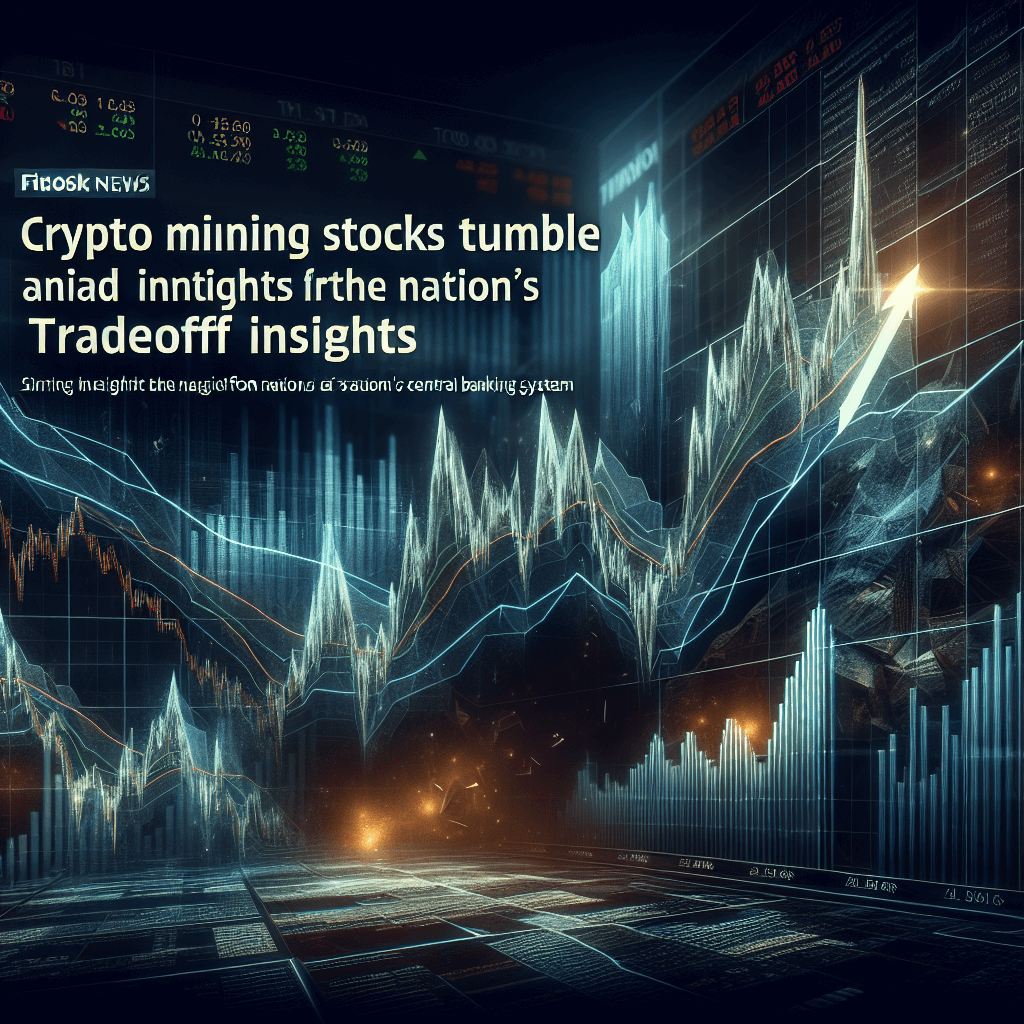Crypto Mining Stocks Tumble Amid Fed’s Tradeoff Insights

US-listed crypto mining equities sold off sharply on May 28 after the Federal Reserve released minutes signaling rising uncertainty over the economic outlook. Despite this equity weakness, major digital assets like Bitcoin held steady, underscoring the decoupling between mining operators’ stock valuations and on-chain metrics.
Fed’s Warning and Implications for Mining Stocks
The May 6–7 FOMC minutes cautioned that policymakers “might face difficult tradeoffs if inflation proves to be more persistent while outlooks for growth and employment weaken.” With the Fed holding its benchmark rate at 4.25%–4.50%, the minutes emphasized elevated risks of both higher unemployment and stickier price pressures.
Impact on Equity Valuations
Rising rate uncertainty increases the discount rate used in valuation models, putting downward pressure on long-duration assets—including deeply capitalized crypto miners. According to a Bloomberg Intelligence discounted cash-flow (DCF) model, a 25 basis-point hike in the risk-free rate can shave 5–7% off projected free cash flow valuations for top mining firms.
Market Performance of Leading Miners
- Riot Platforms (RIOT): Down 8.3% on May 28, as share prices adjusted to margin compression from higher borrowing costs.
- CleanSpark (CLSK): Tumbled 7.6%, reflecting concerns over rising utility rates in key operating regions like Texas.
- MARA Holdings (MARA): Fell 9.6% intraday before bouncing 2.6% in after-hours trading, amid volatile sentiment.
Meanwhile, Coinbase (COIN) slid 4.6% and MicroStrategy (MSTR) dropped 2.1%—extending a five-day downtrend after a class-action suit alleged misleading disclosures about Bitcoin holdings.
Technical Analysis: Hashrate Economics and Energy Costs
Crypto miner profitability hinges on three variables: network difficulty, Bitcoin price, and electricity cost. As of June 1, the Bitcoin network hashrate sat at ~550 EH/s—up 35% year-over-year—raising mining difficulty and lowering block rewards per PH/s of computing power.
“At an average power price of $0.05/kWh, miners break even near $42,500/BTC. Any upward move in US power tariffs will further compress margins,” says Jane Huang, senior mining analyst at Bernstein.
Macro Implications for Crypto Markets
Equity weakness in crypto mining stocks contrasts with relatively stable spot markets. Bitcoin traded near $108,000, down only 0.9% over 24 hours, while the S&P 500 slipped 0.6%. Increased Treasury yields have previously correlated with crypto equities, but on-chain data shows sustained accumulation by long-term holders—signaling divergent dynamics.
Regulatory and Energy Landscape
Energy policy remains a critical variable. The EPA is reviewing new greenhouse-gas reporting rules that may affect large-scale mining facilities. At the same time, states like Texas continue to court miners with favourable tariffs and renewable energy incentives. The competition for low-cost, carbon-neutral power is intensifying.
Outlook Ahead of June Rate Decision
The next Fed rate announcement is set for June 18. The CME FedWatch Tool currently prices in a 98% chance of no change. Market participants will closely watch updated economic projections (the “dot plot”) and Fed Chair Powell’s press conference for clues on future policy pivots.
Expert Perspectives and Strategic Takeaways
- Cost management: Operators with sub-$0.04/kWh average power costs may sustain higher margins even under a static BTC price.
- Capex discipline: Tightening capital markets will favour miners managing expansion judiciously, prioritizing ASIC efficiency over scale alone.
- Hedging strategies: Fixed-price electricity contracts and Bitcoin forward sales can mitigate volatility in margins and cash flows.
Conclusion: While Fed minutes injected volatility into crypto mining equities, underlying long-term fundamentals—hashrate growth, energy sourcing, and institutional adoption—remain intact. Investors will be monitoring both macro signals and on-chain metrics to gauge the next leg of the mining cycle.
This article does not contain investment advice or recommendations. Every investment and trading move involves risk; readers should conduct their own research.